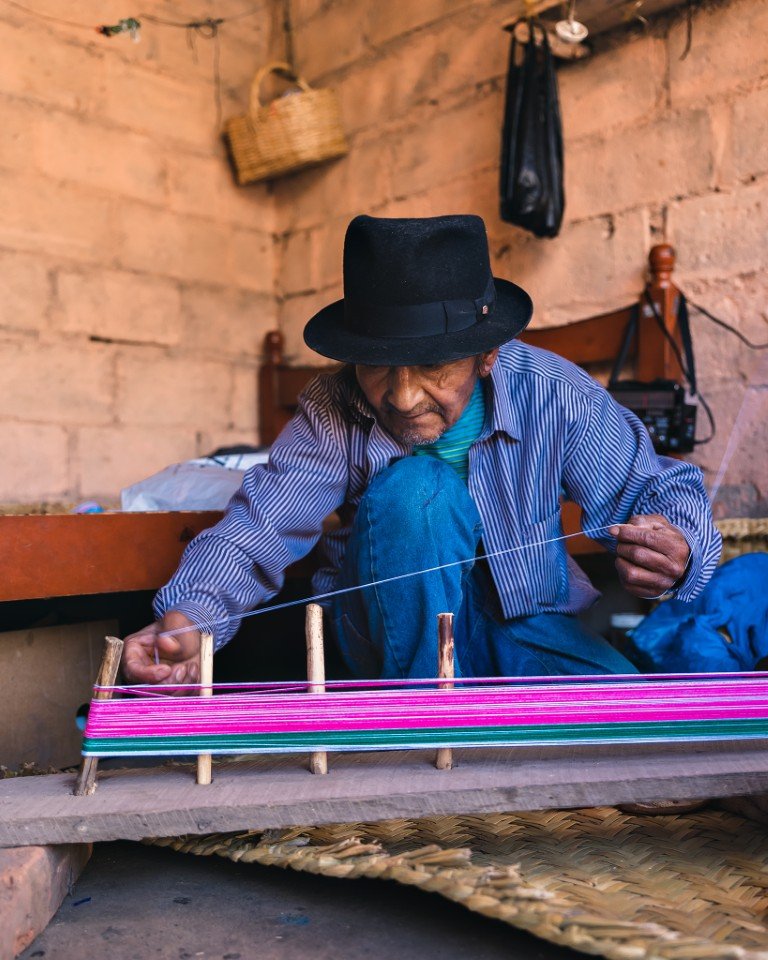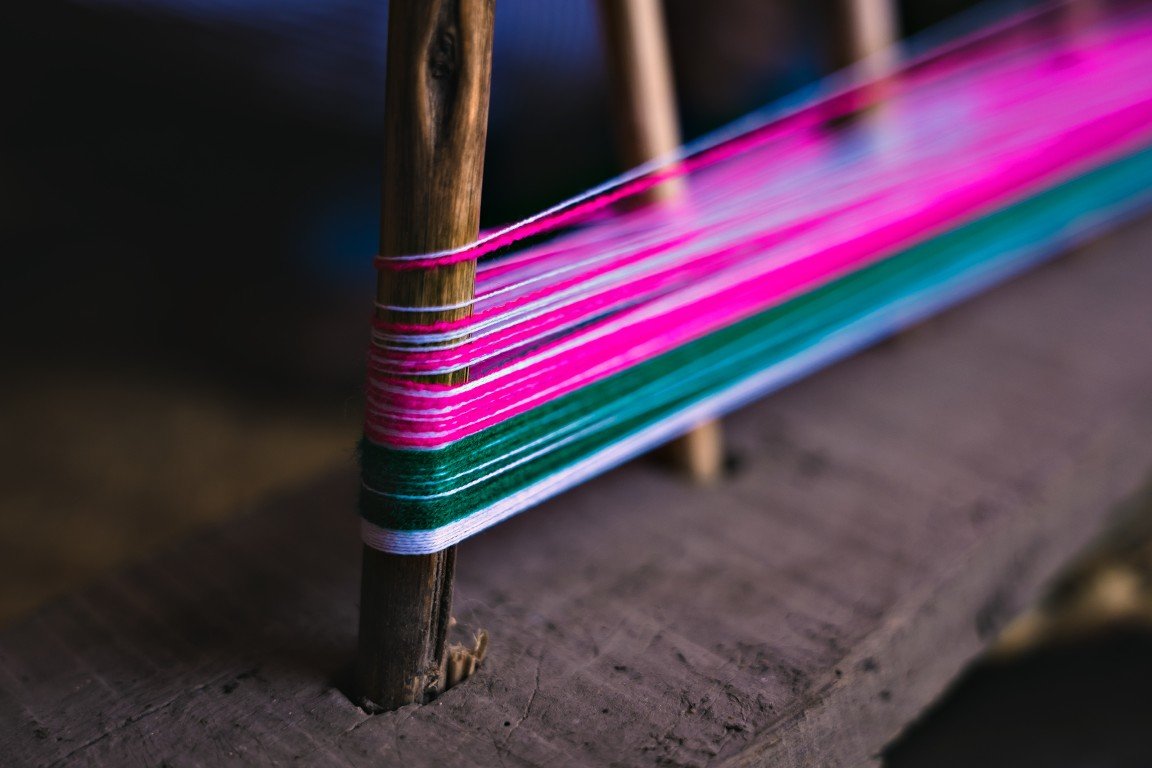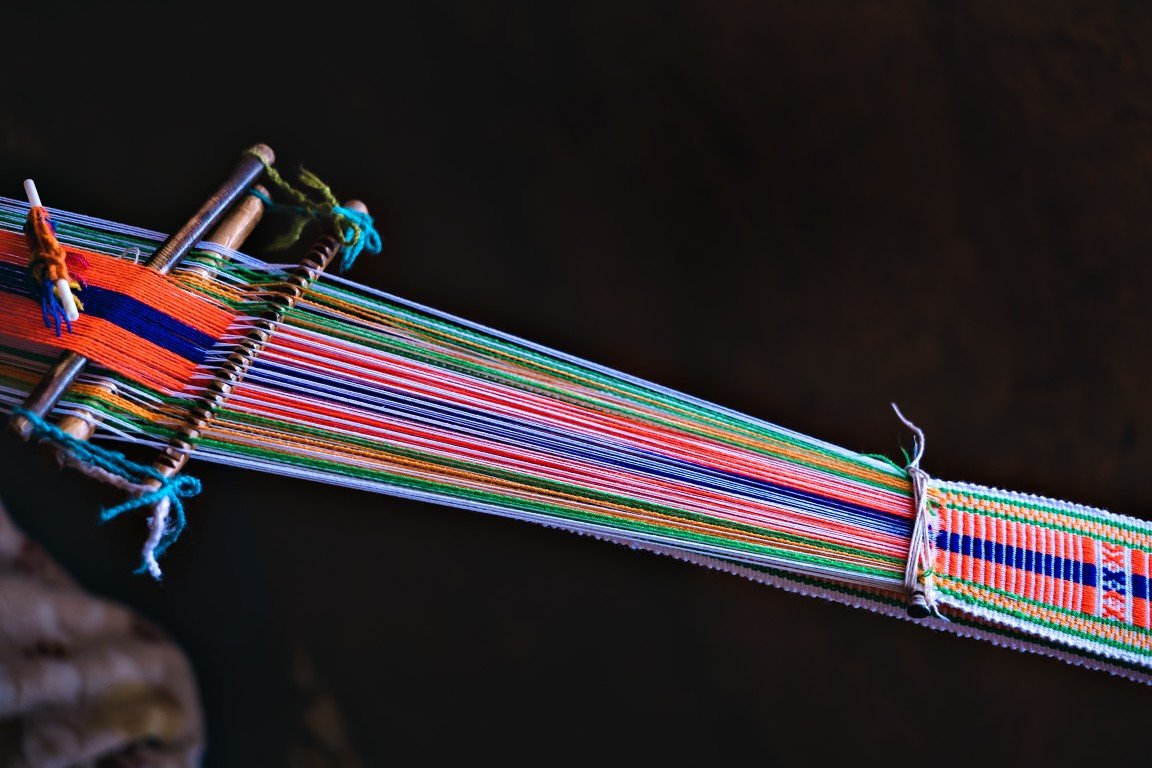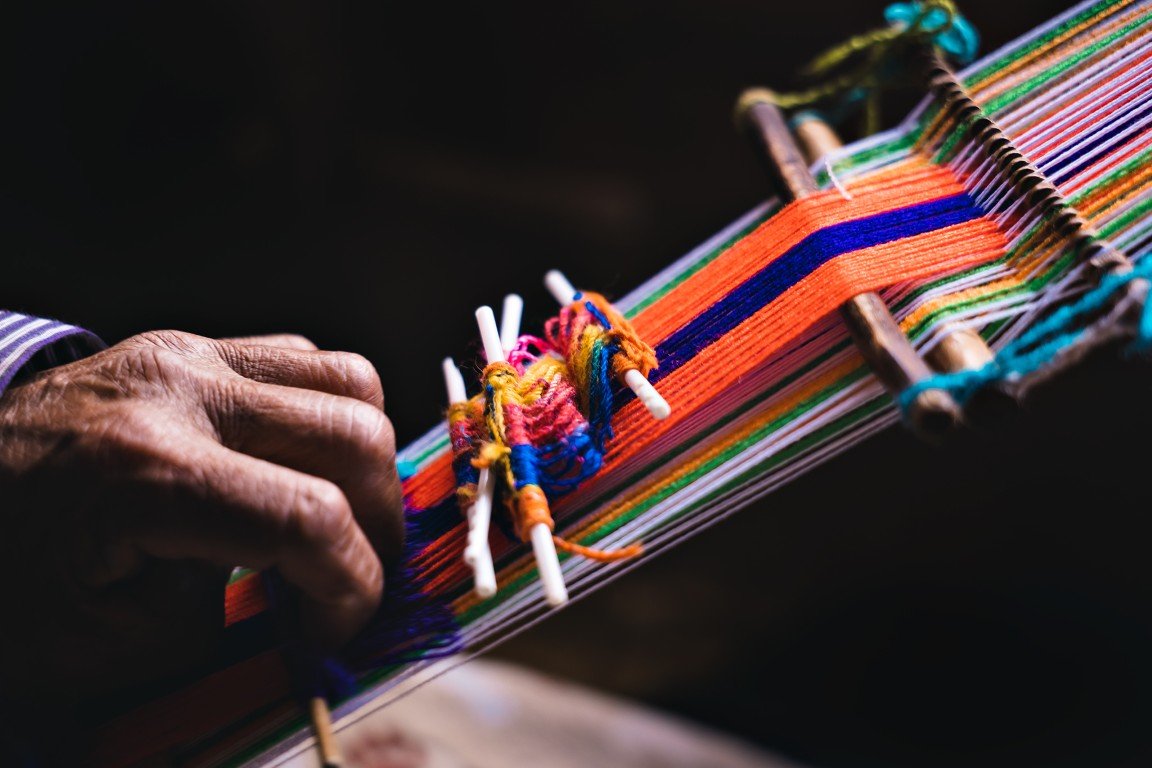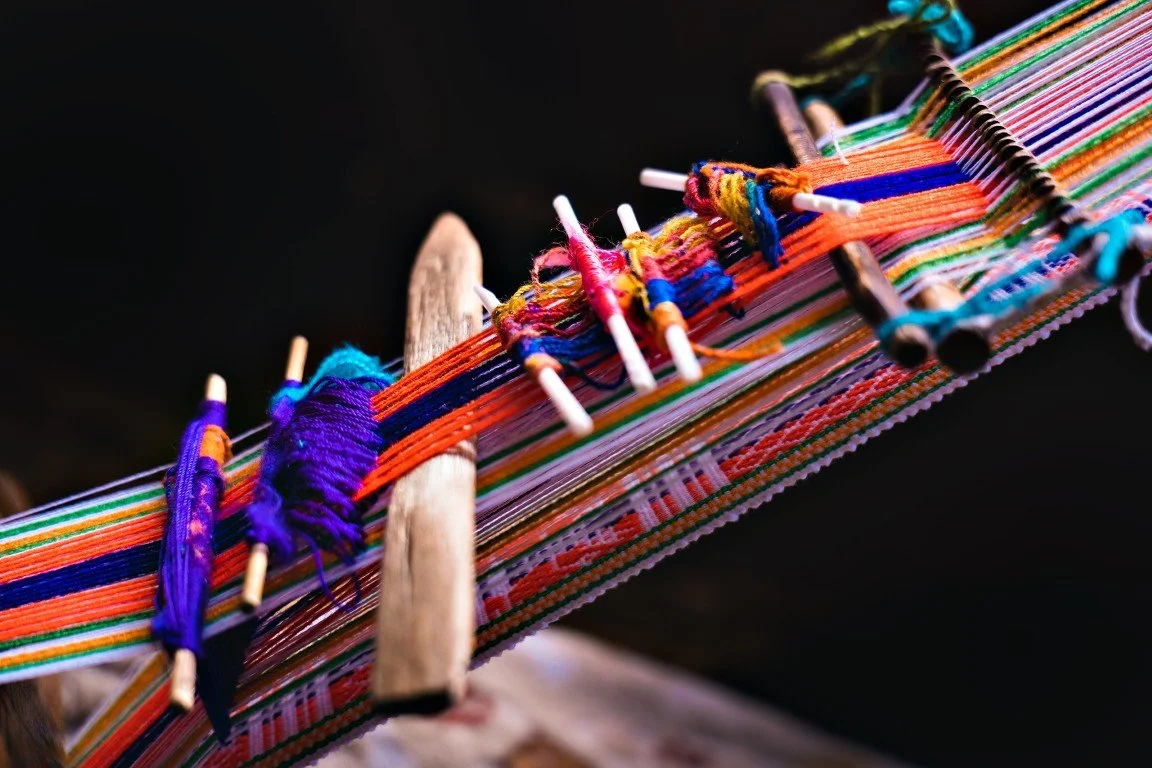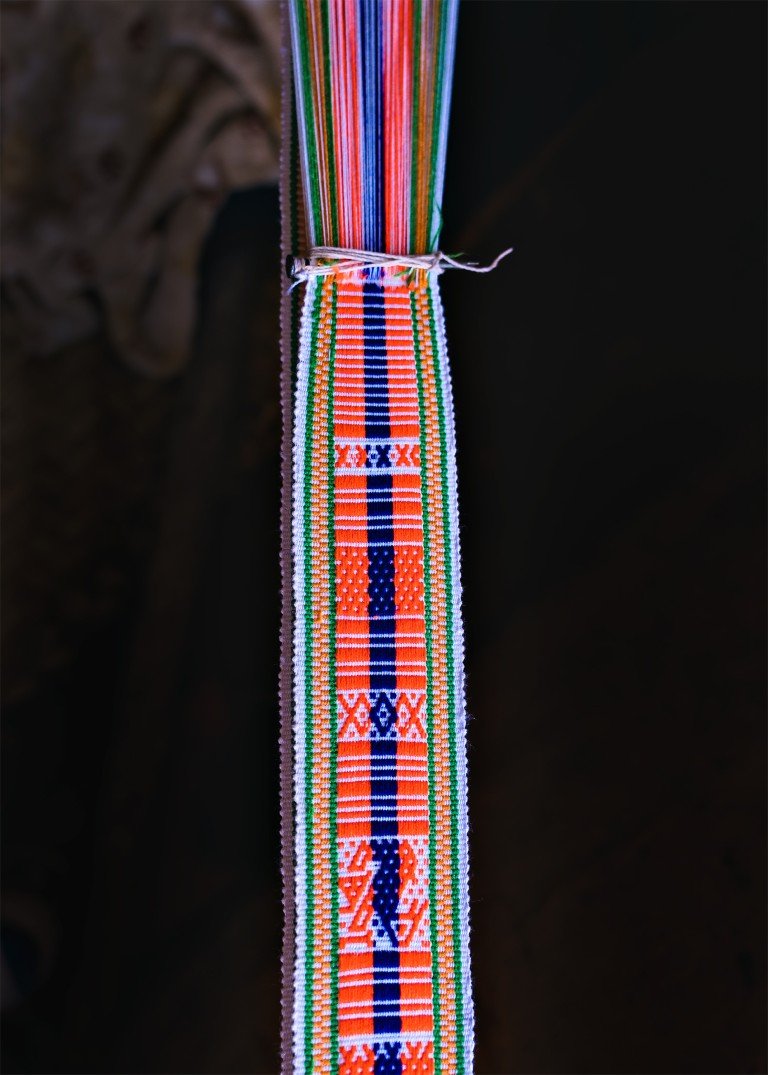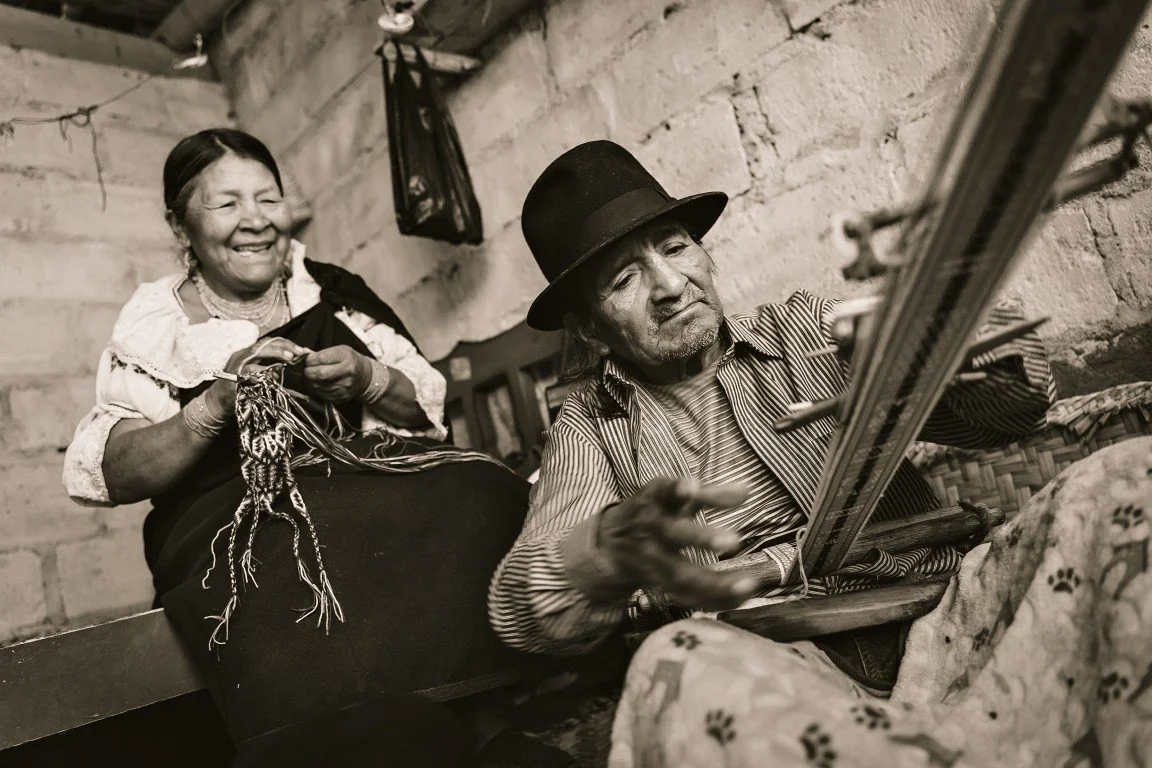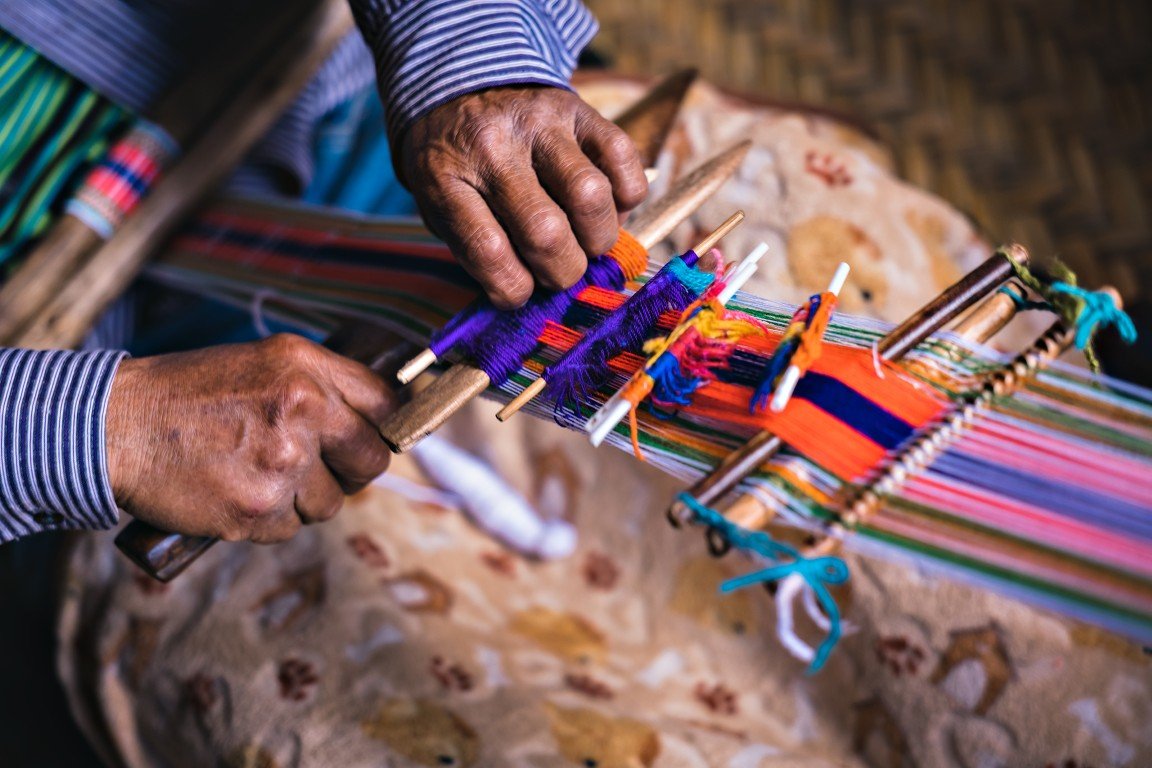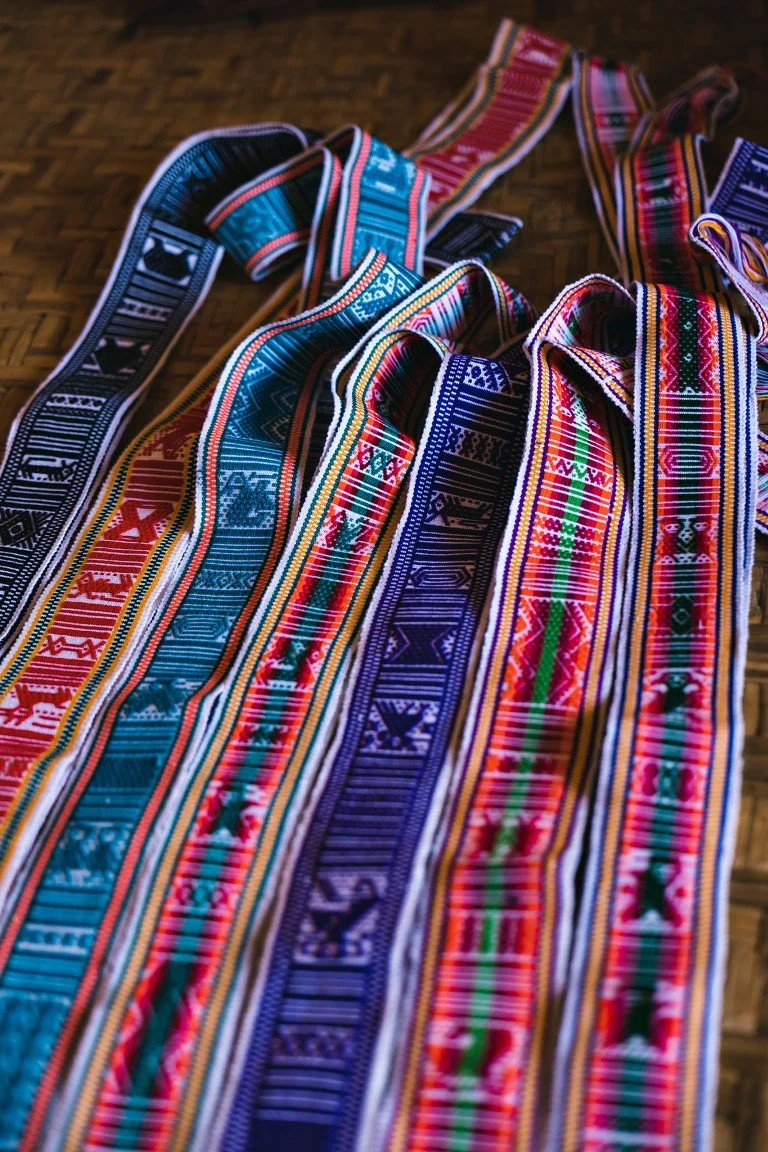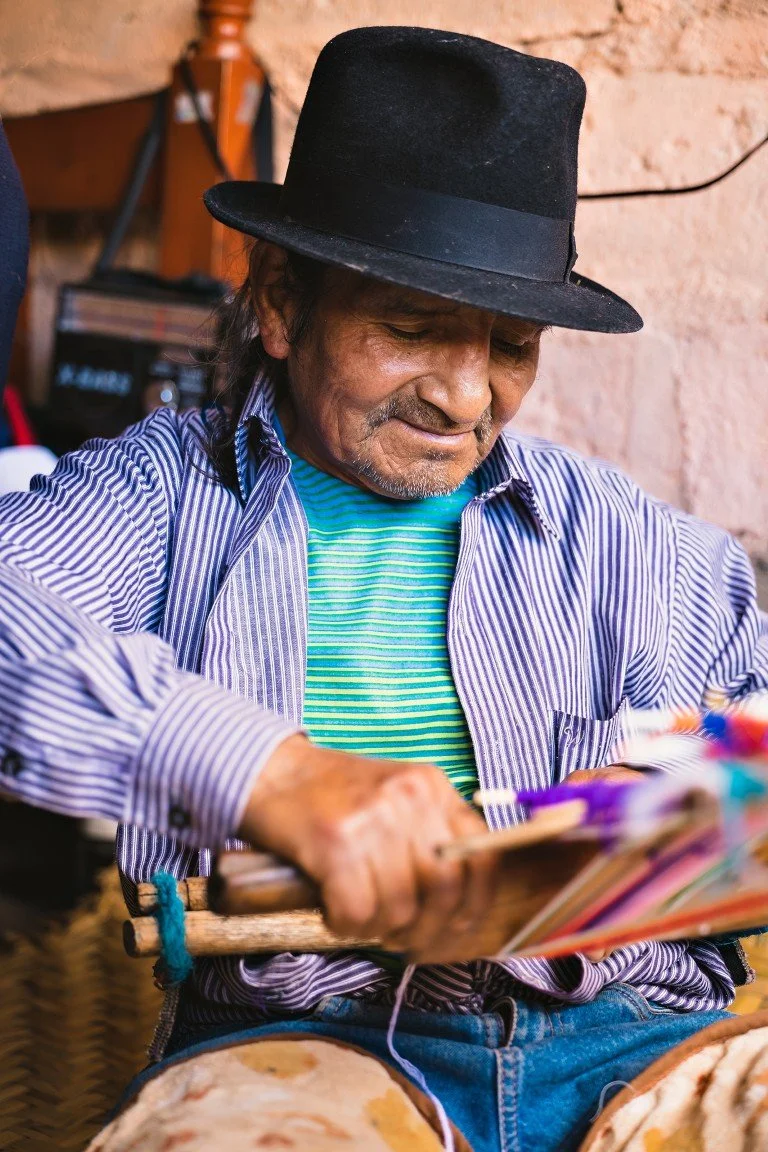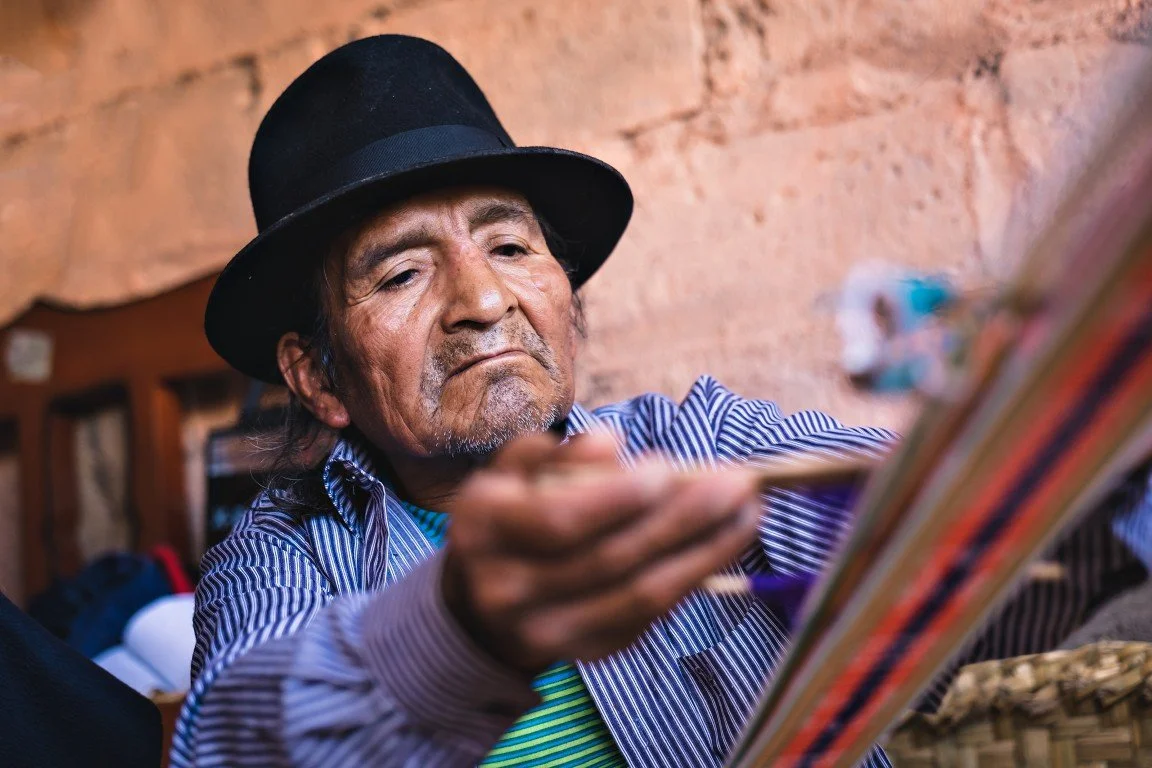
Antonio Guandinango
Guardian of Cotacachi’s Symbolic Textile Art
José Antonio Guandinango, a Kichwa artisan, hails from the community of Cercado in the canton of Cotacachi. Since childhood, he has worked the land, practiced weaving, and nurtured a deep connection to music. Over the years, he has been widely recognized as a traditional musician—playing ceremonial flutes during Inti Raymi celebrations and performing as a community harpist during key rituals such as weddings, wakes, and local festivities. He is also known as a distinguished weaver of traditional belts (fajas) made on the backstrap loom, an ancestral craft steeped in symbolism and cultural memory.
He learned the art of weaving from his father, Don José Manuel Guandinango, transforming it not only into a source of income for his household but also into a vital channel for preserving and sharing ancestral knowledge and worldview. During his youth, José Antonio traveled across various communities in the Cotacachi canton—such as Piaba Chupa, Morlán, Topo, and Santa Bárbara—offering his handmade belts, which were highly valued for their artisanal quality, authentic designs, and unique color combinations rooted in traditional patterns.
Now, at 70 years of age, Don José Antonio continues to work with dedication and love for his craft. He built his own backstrap loom, known as kallua, and through it, he brings to life woven pieces that tell the story of his people. His belts are filled with symbolic representations of the Andean world: human figures, couples, women, men playing flutes; animals such as condors, chickens, opossums, rabbits, and snakes; as well as natural and everyday elements like the sun, water, cooking pots, and even automobiles. This symbolic richness has not been documented in written form—his knowledge lives in his hands and memory. He patiently weaves each belt, intertwining the threads with care and purpose.
Today, José Antonio works alongside his wife, María Zoila Liquinllana, with whom he shares the responsibilities of spinning, warping, and weaving. Their work embodies a profound symbiosis between the intimate and the collective, between the home and the living history of their community.
In stark contrast to the industrially produced belts found in urban markets like Otavalo—often made on electric looms and stripped of cultural meaning—Taita José Antonio’s handcrafted textiles represent both tangible and intangible heritage. Each of his belts is a visual document, a silent form of resistance against cultural homogenization and the loss of ancestral knowledge.
We invite both local and international audiences to recognize and value these unique creations. In every thread and every design, the identity of a people who have preserved their history and worldview is woven and safeguarded.
Digital Textile Map
*
Digital Textile Map *
Gallery
*
Gallery *

